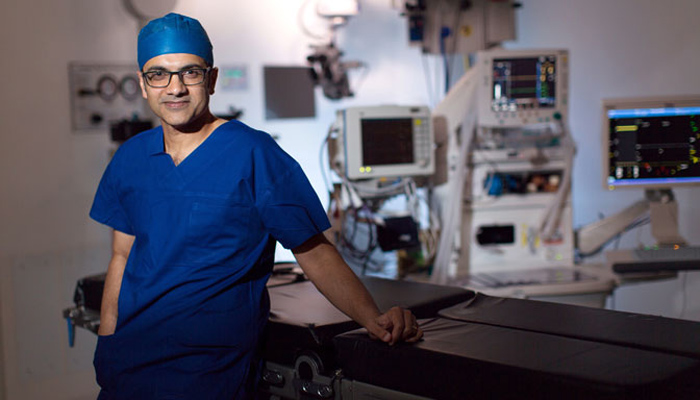Nearly everyone will have either experienced back pain themselves or know someone else who has. For some people this will have been a short-lasting minor event but for others it can have a major impact on their life, including their work, relationships and wellbeing.
There are few if any other health conditions for which there is so much confusion and misunderstanding. A simple search of the internet results in a huge number of different opinions on the best ways to diagnose and treat back pain. The problem is that the majority of these are contradictory to the current evidence and understanding about back pain.
Our recent series of papers in The Lancet, written by 30 experts from around the world, aimed to correct some of the common misunderstandings about back pain.

Associate Professor Mark Hancock urges cheap and safe interventions for back pain.
It is human nature to want to understand what is wrong when you experience pain. It might seem obvious that if we perform enough investigations like MRIs we will find the answer and can then simply fix it.
Imaging linked to worse outcomes
Unfortunately, this is not the case with back pain. There is very strong evidence that imaging cannot identify the source of back pain in the vast majority of people, and that imaging findings such as degeneration and disc bulges are very common in people without pain. Despite this, imaging rates continue to increase.
What is most concerning is that there is evidence that imaging is not just a waste of money, but it can actually be harmful. People who get imaged often have worse outcomes, and are more likely to end up having unnecessary surgery.
Hearing that your back is degenerated or has a disc herniation (or some of the other common words used when reporting scans) not surprisingly makes many people more worried about their back pain and more apprehensive about keeping active despite the pain.
This is huge problem as we know that staying active is the best thing you can do when you have back pain. Inactivity results in secondary problems of weakness and stiffness that can contribute to ongoing pain. In addition, the amount of pain we experience is controlled by our brain so increased worry and anxiety increase the pain we feel.
Opioids and surgery not the answer
Treatments for back pain range from simple and cheap interventions like exercise, reassurance and advice, to strong medications like opioids and surgery. The current problem is that the complex, dangerous interventions like opioids and surgery are being more commonly prescribed despite limited evidence of effectiveness.
In the United States, prescription-opioid related deaths are about 15,000 annually and the most common reason for being on prescription opioids is back pain. In the US more than $12.8 billion dollars is spent annually on spinal fusions, yet for most people fusion is no better than exercise.
The current approach to back pain is broken and not sustainable. We need to stop using expensive, complex and dangerous investigations and treatments and replace these with simple, cheap and safe interventions with proven effectiveness. To achieve this the community, clinicians and governments need to better understand back pain and perverse drivers of poor care.
Mark Hancock is an Associate Professor of Physiotherapy in the Faculty of Medicine and Health Science.



